The Giant Squid: Denizens of the Deep
Giant squid (Architeuthis dux) are deep-ocean dwelling squid, shrouded in mystery and captivating imaginations for centuries. These enigmatic creatures are rarely observed in their natural habitat, with much of what we know gleaned from carcasses that have surfaced. Reaching astounding lengths, these cephalopods are a testament to the remarkable biodiversity found in the abyssal depths.
Size and Physical Characteristics
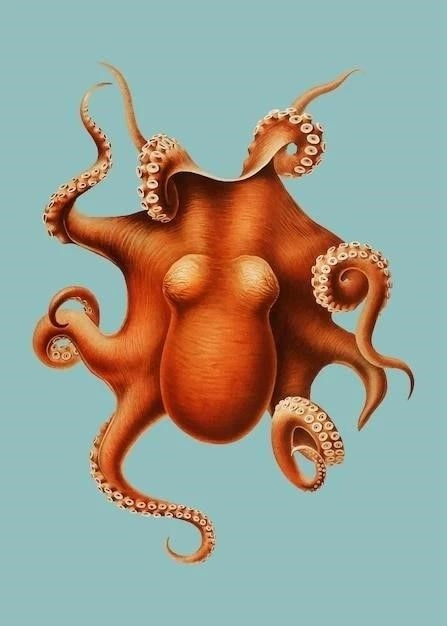
Giant squid, true to their name, are among the largest invertebrates on Earth, exhibiting deep-sea gigantism. While tales of gargantuan specimens exceeding 60 feet have circulated in maritime lore, scientifically validated measurements tell a slightly different, yet still impressive, story. The largest giant squid reliably measured reached a total length of approximately 43 feet, with the mantle—the primary body section—measuring over 7 feet. Females tend to be larger than males, with some estimations suggesting a maximum mantle length exceeding 8 feet in females.
Beyond their sheer size, several key physical characteristics distinguish giant squid. Like other squid species, they possess a torpedo-shaped mantle, eight arms, and two elongated feeding tentacles. These tentacles are formidable weapons, armed with hundreds of powerful suckers, each lined with sharp, serrated rings. These suckers allow the squid to grasp and manipulate prey, which can be as large as themselves. Their eight arms are similarly equipped with suckers, aiding in directing food towards a powerful beak, resembling that of a parrot, capable of tearing through flesh and bone.
Another distinctive feature is their eyes, the largest in the animal kingdom. These massive orbs, measuring up to a foot in diameter, allow giant squid to perceive the faintest glimmers of bioluminescence in the lightless depths they call home. This adaptation is crucial for both hunting and predator avoidance in the abyssal environment. Their large size also necessitates a sophisticated nervous system, with a complex brain located between their eyes, coordinating their movements and sensory input.
Coloration in giant squid is believed to be predominantly reddish-pink to deep purple, a result of pigment-containing cells called chromatophores within their skin. These chromatophores can change size, altering the squid’s coloration, potentially for camouflage or communication purposes. However, much about their coloration behavior remains unknown due to the challenges of observing them in their natural habitat.
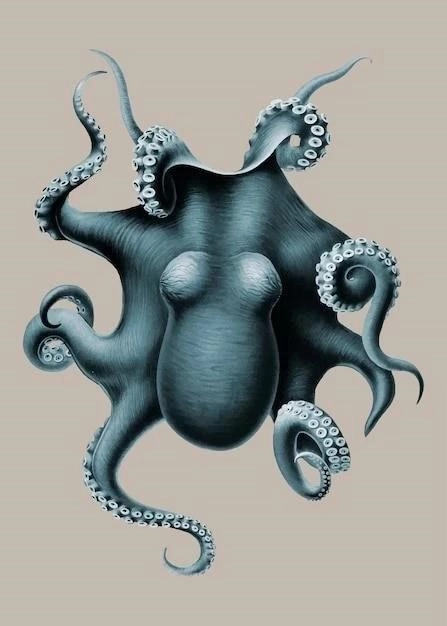
Distribution and Habitat
The giant squid, a creature of the deep, inhabits the cold, dark waters of the open ocean, residing primarily in depths ranging from 1,000 to 3,000 feet and extending potentially deeper. Their distribution appears to be cosmopolitan, with strandings—squid carcasses washing ashore—reported from various coastal regions worldwide, including the North Atlantic, North Pacific, and waters surrounding New Zealand and Australia. This global distribution, however, is largely inferred from stranding events and the presence of giant squid beaks within the stomachs of sperm whales, their primary predator.
Giant squid are thought to favor specific oceanographic conditions, particularly areas of high productivity where nutrient-rich waters well up from the depths. These upwellings support a thriving ecosystem, attracting the squid’s prey—fish, other squid species, and even smaller individuals of their own kind. While their precise movements and migratory patterns remain largely unknown, it’s likely they undertake vertical migrations, moving towards shallower waters at night to hunt and retreating to the depths during daylight hours, potentially to avoid visual predators.
The challenges of observing these elusive creatures in their natural habitat, the vast and often inhospitable depths of the ocean, have hampered efforts to definitively map their distribution and abundance. Tagging efforts, while challenging, offer a promising avenue for understanding their movements and habitat preferences. As technology advances, researchers are developing more sophisticated methods for studying deep-sea environments, potentially shedding further light on the enigmatic lives of giant squid and the ecosystems they inhabit.
Diet and Hunting Strategies
Giant squid, as apex predators in the deep-sea ecosystem, are opportunistic carnivores, consuming a diet primarily comprised of fish, cephalopods—including smaller squid, even those of their own kind—and crustaceans. The specifics of their diet are often pieced together from the stomach contents of stranded individuals, offering a glimpse into their feeding habits. The presence of undigested prey remains suggests a rapid consumption process, a testament to their hunting prowess.
While direct observations of their hunting behavior are scarce, scientists speculate that giant squid employ a combination of ambush predation and active pursuit, utilizing their unique physical adaptations to capture prey in the lightless depths. Their massive eyes, among the largest in the animal kingdom, likely play a crucial role, detecting the faint bioluminescent glow emitted by some deep-sea organisms. This allows them to navigate the darkness and potentially target prey from a distance.
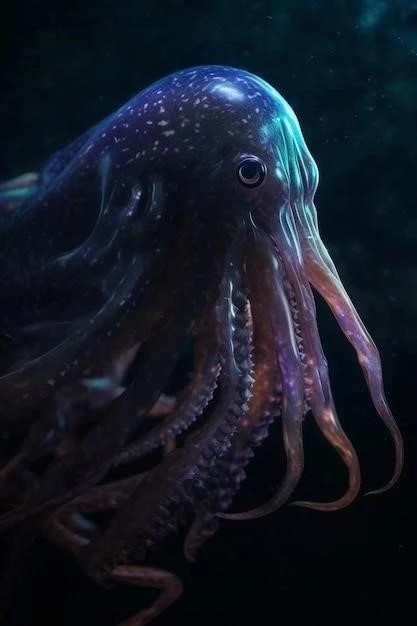
Once a potential target is identified, the squid can rapidly extend its two elongated feeding tentacles, tipped with hundreds of powerful, serrated suckers. These tentacles, capable of stretching twice the length of the squid’s body, ensnare prey with lightning speed, immobilizing them before drawing them towards the squid’s beak. The eight shorter arms, also lined with suckers, aid in manipulating and directing the prey towards the powerful beak, which can deliver a fatal bite, tearing through flesh and bone with ease.
Given the sporadic nature of food resources in the deep sea, giant squid are likely opportunistic feeders, consuming prey as encountered rather than actively seeking specific species. The challenges of studying these elusive creatures in their natural environment leave many questions about their feeding ecology unanswered. However, ongoing research utilizing advanced submersible technology and analysis of stomach contents from stranded individuals continues to provide valuable insights into the dietary preferences and hunting strategies of these deep-sea denizens.
Lifespan and Reproduction
The lifespan of a giant squid, like many aspects of its biology, remains a subject of ongoing scientific inquiry. Due to the challenges of observing these elusive creatures in their natural deep-sea habitat, much of our understanding comes from examining beaks found in the stomachs of sperm whales and analyzing the growth rings in statoliths, calcareous structures in the squid’s inner ear that record age similar to tree rings. Current estimations suggest a relatively short lifespan for giant squid, perhaps only 4-5 years.
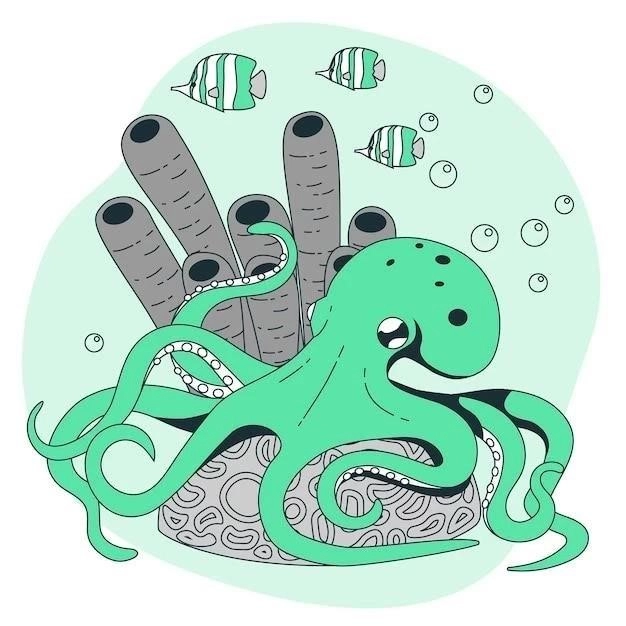
Reproduction in giant squid is another area shrouded in mystery. Scientists hypothesize that males, typically smaller than females, use their long feeding tentacles to transfer sperm packets, known as spermatophores, to the female. The exact method of fertilization remains unknown, as does the location and conditions under which females lay their eggs. It’s speculated that females release large numbers of small eggs, potentially millions, into the water column, where they are fertilized and develop independently.
Observations of giant squid hatchlings and juveniles are exceedingly rare, offering limited insights into their early life stages. It’s believed that these young squid undergo a period of rapid growth, fueled by the abundant prey available in the deep sea. They likely reach sexual maturity within a few years, continuing the cycle of reproduction and perpetuating their lineage in the depths.
Further research, employing advanced deep-sea exploration technologies and innovative tagging methods, is crucial for unlocking the secrets surrounding the lifespan and reproductive behaviors of giant squid. Unraveling these mysteries would not only enhance our understanding of these enigmatic creatures but also provide valuable insights into the complex ecological dynamics of the deep-ocean environment they inhabit.
Myths, Legends, and Cultural Significance
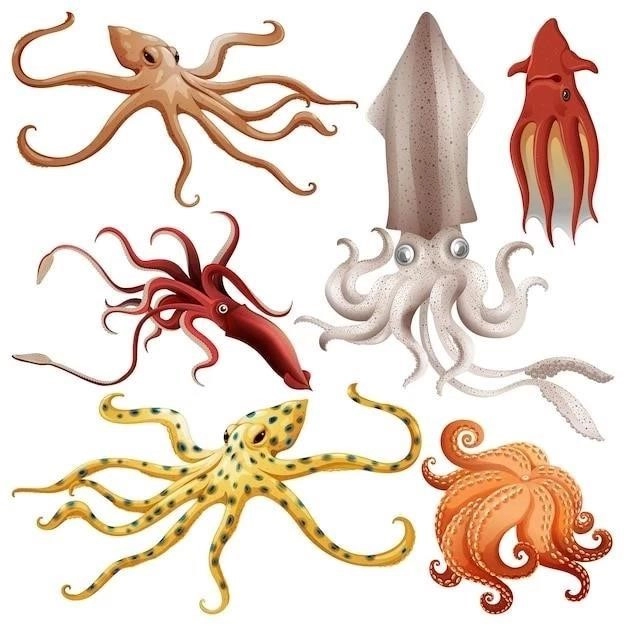
For centuries, the giant squid, a denizen of the deep, has captivated the human imagination, inspiring awe, fear, and endless speculation. Long before scientific inquiry shed light on these elusive creatures, tales of colossal sea monsters, capable of dragging ships and their crews to watery graves, permeated maritime folklore across cultures. These legendary beasts, often depicted with serpentine bodies, grasping tentacles, and malevolent intentions, wove their way into ancient mythologies, serving as cautionary tales and embodiments of the ocean’s untamed power.
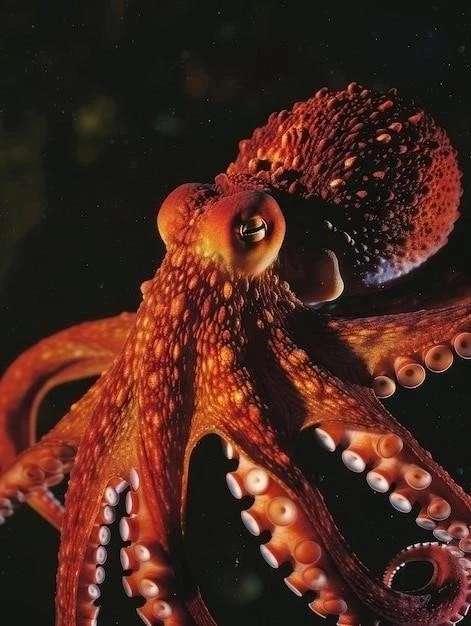
Perhaps the most enduring of these legends is the kraken, a monstrous sea creature of Scandinavian folklore, possessing immense size and a fearsome reputation for attacking ships. While often described as a cephalopod-like entity, early accounts vary in their depictions, sometimes blurring the lines between squid and octopus anatomy. The kraken’s enduring presence in maritime lore likely stems from sightings of real giant squid, their enormous size and unusual appearance easily lending themselves to exaggerated tales.
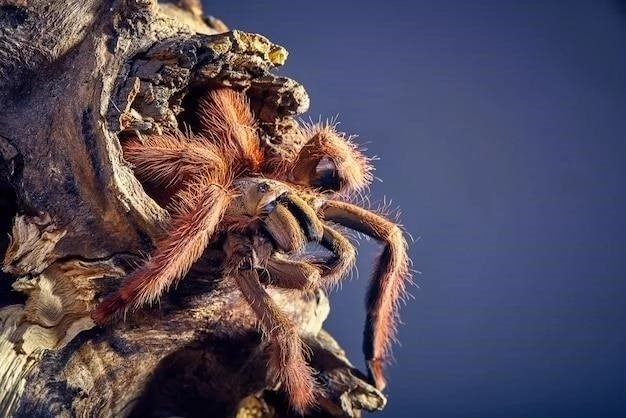
Beyond mythology, the giant squid has secured its place in literature and popular culture. Jules Verne, in his classic adventure novel, “Twenty Thousand Leagues Under the Sea,” features a memorable encounter between the submarine Nautilus and a giant squid, solidifying the creature’s image as a formidable denizen of the deep. More recently, giant squid have appeared in documentaries, feature films, and even video games, further solidifying their place in the public consciousness.
While scientific exploration has replaced mythical narratives with a more nuanced understanding of giant squid biology and behavior, these creatures continue to hold a powerful sway over our imaginations, reminding us of the vast, unexplored realms of our planet and the awe-inspiring life forms they harbor.










